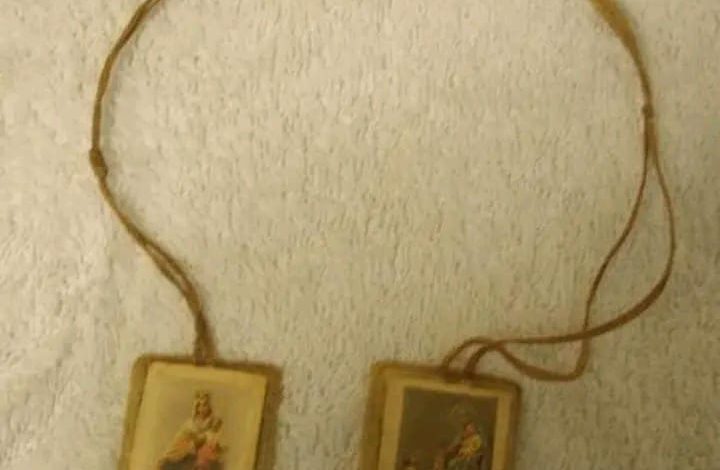
ADVERTISEMENT
The Scapular: A Symbol of Faith and Protection
Introduction
Throughout history, symbols and objects have served as physical manifestations of faith, connecting believers to their spirituality in tangible ways. Among the most revered and cherished items in the Catholic faith is the scapular. Recognizable by its two small pieces of cloth connected by strings, each displaying sacred images, the scapular holds significant spiritual meaning. Often worn as a necklace, it is more than just an accessory—it’s a profound reminder of devotion, protection, and commitment to living a life aligned with God’s teachings.
Origins and Meaning
The scapular’s roots can be traced back to the Carmelite Order, a community of hermits on Mount Carmel in the Holy Land. According to tradition, the Blessed Virgin Mary appeared to Saint Simon Stock, a Carmelite, in the 13th century, presenting him with a scapular. She promised protection and salvation to those who wore it faithfully. Over time, the scapular became a symbol of devotion to Mary and a reminder of her maternal protection. Its use spread among Catholics around the world, and it became associated with several other religious orders, each attaching their own symbolic meaning and practices to its use.
The two small pieces of cloth, often bearing images of Mary or Jesus, represent a prayerful connection between the wearer and the divine. It serves as a “yoke” or spiritual armor, symbolizing one’s dedication to faith, a commitment to avoid sin, and a pledge to serve others. The scapular is a silent prayer worn daily, encouraging the wearer to follow Christ’s example in all they do.
Spiritual Significance and Use
Wearing a scapular is a deeply personal act of faith. For many, it acts as a constant reminder to live a virtuous life, focusing on humility, charity, and devotion. It’s not worn for decoration or as a simple token; rather, it is worn with reverence, acknowledging a bond with God and the Virgin Mary. Traditionally, the scapular is blessed by a priest during a ceremony known as “investiture.” This blessing represents a dedication to a life of service and faith, a spiritual “habit” similar to the attire worn by monks and nuns.
ADVERTISEMENT
Additionally, the scapular is associated with specific promises. Among the most well-known is the “Sabbatine Privilege,” which, according to tradition, guarantees that those who wear it devoutly will be freed from purgatory on the Saturday after their death. While modern theological interpretations vary, the message remains clear: wearing the scapular reflects a life focused on faith and devotion.
Conclusion
The scapular is far more than an object of the past—it’s a living tradition, a spiritual tool, and a cherished symbol that continues to hold deep meaning for Catholics worldwide. Its power lies not in the material itself but in the faith, love, and commitment it signifies. For those who remember and wear it, the scapular serves as a shield of protection, a sign of devotion, and a source of comfort, reminding them that they are never alone on their journey. Through this simple yet profound symbol, believers carry a piece of their faith with them, honoring the legacy of generations past while strengthening their own spiritual lives.




